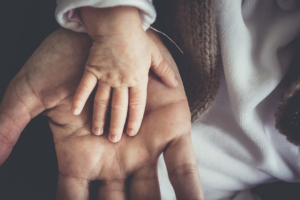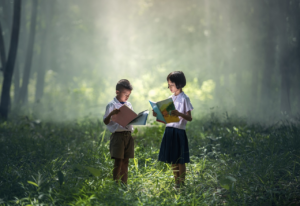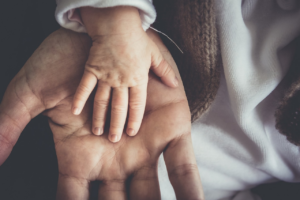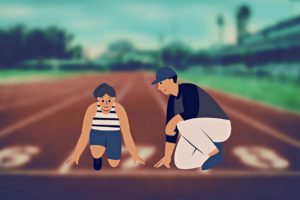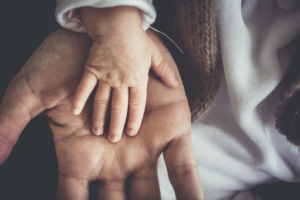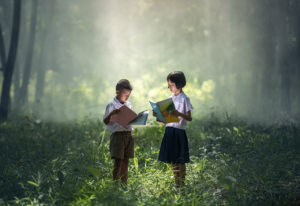Are you looking for ways to teach your child important social and emotional skills? One effective method is through reading children’s books that focus on these topics.
Not only will your child learn valuable lessons, but they’ll also improve their reading comprehension and vocabulary. Luckily, there are plenty of fantastic books out there that can help your child develop these skills.
From understanding their own emotions to learning empathy and kindness, these books cover a range of topics. In this article, we’ll highlight some of the best children’s books for teaching social and emotional skills.
So, grab a cozy blanket and get ready to explore the wonderful world of children’s literature!
Key Takeaways
- Children’s books are effective tools for teaching social and emotional skills.
- Books like The Feelings Book, The Giving Tree, A Sick Day for Amos McGee, and The Invisible Boy can teach empathy, kindness, and the importance of inclusion.
- Family traditions can help build emotional resilience and a sense of security.
- How Full Is Your Bucket? For Kids is an excellent resource for parents and educators looking to teach children about the impact of their actions on others and encourage positivity and self-esteem.
The Feelings Book by Todd Parr
You’ll love Todd Parr’s ‘The Feelings Book’ because it’s a great tool for helping you understand and express your emotions.
The book uses bright colors and fun illustrations to teach children about different emotions, like happiness, sadness, and anger. It also encourages children to talk about their feelings and share them with others.
This book is a great resource for teachers to use in the classroom when teaching about emotional development. By understanding and expressing their emotions, children can learn to regulate their behavior and build stronger relationships with others.
‘The Feelings Book’ is an important tool for building emotional intelligence and teaching children how to manage their feelings in a healthy way.
The Giving Tree by Shel Silverstein
If you haven’t read The Giving Tree by Shel Silverstein, you’re missing out on a heartwarming story about the power of love and sacrifice. This classic children’s book is a great tool for teaching empathy and selflessness to young readers.
The story follows a young boy and a tree who love each other deeply. As the boy grows older, he gradually takes more and more from the tree until there’s nothing left but a stump.
Through analyzing the role of sacrifice in The Giving Tree, children learn about the importance of giving and receiving in relationships, and how true love requires both.
This book is a must-read for parents and teachers alike who want to teach children about empathy, selflessness, and the beauty of unconditional love.
A Sick Day for Amos McGee by Philip C. Stead
You’re about to delve into a heartwarming children’s book called ‘A Sick Day for Amos McGee’ by Philip C. Stead.
Through this story, you’ll be able to learn how to empathize with others, especially those who are feeling under the weather.
The book also emphasizes the significance of friendship and how it can truly make a difference in someone’s life.
Lastly, ‘A Sick Day for Amos McGee’ encourages kindness, reminding us that even small acts of kindness can go a long way.
Teaches Empathy Towards Others
When reading books that teach empathy exercises and emotional intelligence, you’ll find yourself stepping into the shoes of different characters and feeling what they feel. This allows you to develop a deeper understanding and empathy towards others.
One such book that does an incredible job at teaching empathy is ‘The Invisible Boy’ by Trudy Ludwig. This book tells the story of Brian, a boy who feels invisible at school, until a new student arrives and befriends him.
Through the story, children learn about the importance of including and valuing others, even if they seem different or invisible. This book is a wonderful tool for teaching children about empathy and kindness, and it can help them develop these important skills that will serve them well throughout their lives.
Demonstrates the Importance of Friendship
Imagine how lonely life would be without the support and companionship of true friends, and the story in ‘The Invisible Boy’ beautifully illustrates the importance of cultivating meaningful friendships.
This book is an excellent tool for building social skills in children, as it teaches them the value of kindness, empathy, and inclusion. The story follows a boy named Brian, who feels invisible and unnoticed by his peers, until a new student named Justin arrives and befriends him.
Through their friendship, Brian gains confidence and learns to express himself, while Justin shows him how to reach out to others and make new friends. ‘The Invisible Boy’ is a heartwarming tale that highlights the importance of friendship in our lives, and how it can positively impact our social and emotional wellbeing.
It encourages children to be kind and accepting towards others, and to look beyond appearances and differences to find common ground. The book also offers valuable lessons on empathy, as readers are able to see how Brian feels when he is excluded and how Justin’s kindness helps him feel seen and valued.
Overall, ‘The Invisible Boy’ is a must-read for parents, teachers, and caregivers who want to teach children the importance of building strong, supportive friendships.
Encourages Kindness
Don’t forget to show kindness to those around you, just like the characters in ‘The Invisible Boy’ did for Brian.
This heartwarming tale, written by Trudy Ludwig and illustrated by Patrice Barton, encourages empathy and compassion towards others.
Brian, the ‘invisible boy,’ feels left out and unnoticed by his classmates until a new student arrives and reaches out to him. Through small acts of kindness, such as sharing a pencil or inviting him to play at recess, Brian begins to feel seen and valued.
Encouraging empathy and spreading kindness are two ways to foster a more caring world. By putting ourselves in someone else’s shoes, we can better understand their feelings and needs. This can be as simple as offering a listening ear or a kind word.
Acts of kindness, no matter how small, can make a big impact on someone’s day and can create a ripple effect of positivity.
‘The Invisible Boy’ is a great reminder to always be kind and inclusive towards others, and to look for ways to make a difference in someone’s life.
The Invisible Boy by Trudy Ludwig
In ‘The Invisible Boy’ by Trudy Ludwig, readers witness the loneliness and isolation of a young boy who feels invisible to his peers. This book is a powerful tool for teaching empathy and overcoming isolation. It highlights the importance of kindness and inclusion in a relatable way for children.
The story follows Brian, the invisible boy, as he navigates his school days feeling left out and unnoticed by his classmates. However, when a new student arrives, Brian reaches out and shows kindness. This ultimately leads to his own inclusion and recognition by his peers.
This heartwarming tale offers a valuable lesson for children on the impact of small acts of kindness and the power of inclusion.
The Kissing Hand by Audrey Penn
Now that you’ve learned about The Invisible Boy, let’s dive into another fantastic children’s book for teaching social and emotional skills: The Kissing Hand by Audrey Penn. This heartwarming story follows a young raccoon named Chester who’s scared to leave his mother and go to school. To ease his worries, his mother shares a special family tradition called the ‘kissing hand.’
Teaching strategies for this book can involve encouraging children to share their own family traditions and discussing ways to cope with separation anxiety. Parental involvement can also play a significant role in this process by reinforcing the message of the story and continuing the tradition of the ‘kissing hand’ at home.
Here are two nested bullet point lists to illustrate the importance and impact of this book:
In the book, the ‘kissing hand’ tradition is passed down from generation to generation, emphasizing the significance of family traditions in building emotional resilience.
This can spark conversations with parents and children about their own family traditions and how they can help build a sense of security and belonging.
The book also highlights the importance of small gestures, like a simple kiss on the hand, in showing love and support for a child during a difficult time.
This can encourage parents and caregivers to find their own unique ways to show affection and support for their child, especially during times of stress and anxiety.
Overall, The Kissing Hand is a beautiful story that teaches valuable lessons about coping with separation anxiety and building emotional resilience. By incorporating teaching strategies and parental involvement, this book can have a significant impact on children’s social and emotional development.
How Full is Your Bucket? For Kids by Tom Rath and Mary Reckmeyer
Do you want to teach your child the importance of positive thinking, gratitude, and kindness? Look no further than How Full is Your Bucket? For Kids by Tom Rath and Mary Reckmeyer.
This book helps children understand the impact of their actions on others and encourages them to make a positive difference in the world.
So, grab a copy and start sharing these powerful lessons with your little ones today!
Teaches the Importance of Positive Thinking
Positive thinking is crucial in children’s development of social and emotional skills, and the best children’s books effectively teach this concept. When children learn to think positively, they become more confident and resilient, which helps them navigate through life’s challenges.
Here are some ways that ‘How Full Is Your Bucket? For Kids’ teaches the importance of positive thinking and self-esteem:
- The book encourages children to focus on positive experiences and feelings, and to find ways to spread positivity to others.
- It teaches them that their actions and words have an impact on others, and that they have the power to make someone’s day better with a simple act of kindness.
- It also emphasizes the importance of self-care and taking care of one’s own emotional needs, which helps build a stronger sense of self-esteem.
- The colorful illustrations and relatable characters make the book engaging and enjoyable for children, making it easier for them to connect with the message.
- The activities and discussion questions included in the book help children reflect on their own experiences and feelings, and apply the concepts they learn in real-life situations.
Overall, ‘How Full Is Your Bucket? For Kids’ is an excellent choice for parents and teachers who want to help children develop positive thinking and self-esteem. With its simple yet powerful message and engaging activities, it is sure to make a positive impact on children’s emotional well-being and social skills.
Encourages Gratitude and Kindness
How Full Is Your Bucket? For Kids is a fantastic book that encourages children to practice gratitude and develop kindness habits towards others. The book follows the story of Felix, a young boy who learns the importance of filling his ‘bucket’ with positive thoughts and actions.
By doing so, he not only feels happier himself, but he also spreads happiness to those around him. The book is filled with relatable scenarios that children can easily connect with, such as the feeling of sadness when a friend is mean or the joy of receiving a kind gesture.
Through these relatable situations, children can learn the power of their actions and how they can affect others. By practicing gratitude and developing kindness habits, children can create a positive environment and make the world a better place, one small action at a time.
Helps Children Understand the Impact of Their Actions on Others
As you read How Full Is Your Bucket? For Kids, you’ll gain a deeper understanding of the impact your actions have on others and the importance of being mindful of your behavior.
This book, written by Tom Rath and Mary Reckmeyer, teaches children about the power of positivity and how it can help fill someone’s ‘bucket,’ while negativity can empty it.
The story follows a young boy named Felix who learns from his grandfather about the importance of being kind and how it can make a difference in someone’s life.
To further engage young readers, this book includes a nested bullet point list that highlights key takeaways. One sub-list emphasizes the importance of understanding consequences, reminding children that their actions can have both positive and negative effects on others.
Another sub-list focuses on empathetic communication, encouraging children to think about how their words and actions can make someone feel. The final sub-list offers practical tips for children to help fill someone’s bucket, such as giving compliments and showing gratitude.
Overall, How Full Is Your Bucket? For Kids is a valuable resource for parents and educators looking to teach children about empathy, kindness, and the impact of their actions on others.
Frequently Asked Questions
How can parents use these books to start important conversations with their children about social and emotional skills?
To start important conversations with your children about social and emotional skills, consider using relatable characters and sparking their curiosity.
Try asking questions like ‘What would you do if you were in this character’s situation?’ or ‘How do you think the character is feeling right now?’
These types of open-ended questions can lead to deeper discussions about empathy, kindness, and problem-solving.
By using books with relatable characters and situations, you can help your child connect with the material and apply it to their own lives.
Encourage them to ask questions and share their own thoughts and experiences, creating a safe space for open communication.
Are there any common themes or lessons that can be found across all of the books on this list?
When it comes to books for children that aim to teach social and emotional skills, there are some common themes and lessons that can be found across many titles. These may include learning empathy, building resilience, understanding emotions and how to regulate them, and the importance of communication and relationships.
Another important aspect to consider is the impact of diverse representation in children’s books, as it can help children learn about and appreciate different backgrounds and perspectives, which is crucial for developing social and emotional skills.
By exploring these themes and lessons through literature, children can gain a better understanding of themselves and others, and learn valuable skills that will serve them well throughout their lives.
How can educators incorporate these books into their lesson plans to promote social and emotional learning in the classroom?
To promote social and emotional learning in the classroom, there are numerous ways to engage with children’s books.
Creative activities can be used to help children connect with the characters and themes in the stories. For example, you can have students create their own endings to the story or act out scenes from the book.
Additionally, discussions can be held about the emotions and behaviors of the characters, allowing students to relate to the situations and develop empathy.
By incorporating these activities into lesson plans, educators can create a safe and supportive environment that fosters social and emotional growth.
Are there any additional resources or activities that parents and educators can use to reinforce the messages in these books?
Looking for ways to reinforce the messages in children’s books about social and emotional skills? There are plenty of activities and resources available to parents and educators.
For example, you could create discussion questions to help children reflect on what they’ve learned from the books. You could also use role-playing exercises to help children practice the skills they’ve learned in a safe and supportive environment.
Additionally, there are many online resources available, such as worksheets and games, that can help reinforce the lessons from the books. By incorporating these activities and resources into your teaching or parenting, you can help ensure that the valuable lessons from these books stick with children for a lifetime.
Are there any other books or authors that you would recommend for teaching social and emotional skills to children?
If you’re looking for other recommended authors and age-appropriate book selection for teaching social and emotional skills to children, there are plenty of options available.
For younger children, authors like Mo Willems and Sandra Boynton have created picture books that can help teach empathy, kindness, and emotional regulation.
For older children, authors like Jacqueline Woodson and Jason Reynolds have written middle-grade and young adult novels that tackle complex social and emotional themes like racism, grief, and identity.
Ultimately, it’s important to choose books that are both engaging and relatable to the child’s experiences, and that provide opportunities for discussion and reflection.
Conclusion
So, you’ve got a list of the best children’s books for teaching social and emotional skills, but why are these skills so important to learn?
Social and emotional skills are essential for healthy development and well-being. They help children build positive relationships, cope with difficult emotions, and navigate the world around them.
By reading these books with your child, you can help them understand and manage their feelings, develop empathy and compassion, and build the foundation for a happy, healthy life.
These books are not only great for teaching kids about emotions, but they also teach important life lessons about kindness, generosity, and caring for others.
The lessons learned from these books can stay with children for a lifetime and help shape them into kind, empathetic, and socially aware adults.
So, pick up one of these books and enjoy the journey of exploring emotions and developing social and emotional skills with your child.








